Variable winter conditions
Even in the Nordic countries, winter conditions vary significantly, ranging from freezing temperatures to damp rainy weather. These weather conditions pose challenges to the well-being of horses. Basic care and keeping horses clean become more difficult during muddy weather, especially when washing facilities are limited. Dirty skin is more prone to injuries, and damp skin creates excellent conditions for the growth of various pathogens, such as bacteria. Horses should be thoroughly dried, including their skin, and the same applies to their equipment: blankets, leg protectors, and more.
Mud fever and skin infections
During the wet and muddy autumn months, horses are more prone to mud fever and skin infections. Mud fever is a complex condition with various underlying causes. It is a secondary infection, meaning it results from a primary issue. Primary issues may include sunburned skin (e.g., on white socks), skin softened by wet and muddy conditions, scratches, wounds, or allergies—essentially any situation where the skin’s ability to protect itself from external factors is compromised. Identifying the primary cause of mud fever is crucial to addressing and, if possible, eliminating it. If the primary cause persists in the horse’s environment, such as allergens or muddy paddocks, mud fever can easily become chronic.
In cases of mud fever, pathogens on the skin can multiply and invade tissue due to the compromised condition of the skin. Various pathogens can be involved, and the cause of mud fever can vary between horses or even between legs on the same horse. Mud fever is not caused by a single specific pathogen. For instance, Dermatophilus congolensis, an anaerobic bacterium, is a common causative agent in mud fever. Anaerobic pathogens, which thrive in oxygen-deprived conditions, are often responsible for skin infections. In severe cases, these pathogens can invade deeper skin layers, leading to swelling and warmth that may develop into lymphangitis. Once the infection has spread to deeper tissues, topical treatments alone are insufficient, as they do not penetrate these layers. A veterinarian should then assess the need for systemic antibiotics.
Mud fever often cause scabs, forming a highly infectious “scab shield” that protects the pathogenic bacteria. This scab shield is outside the bloodstream’s reach, rendering systemic antimicrobial treatments (such as sulfa medications) ineffective without thorough topical treatment. Scabs should not be forcefully removed but instead softened and detached gradually through treatment. Scabs are highly infectious and should be disposed carefully.
It is important to note that thick ointments, such as those based on petroleum jelly or paraffin, can unintentionally promote anaerobic bacterial growth by creating oxygen-deprived conditions on the affected area. Therefore, such ointments are often unsuitable for treating skin infections like mud fever. Additionally, thick ointments tend to attract dirt, and dirty, greasy layers over inflamed skin create anaerobic conditions that hinder recovery.
The treatment of mud fever can take several weeks, especially if the conditions sustaining the infection (the primary cause) persist.
.
Typical problems in treating mud fever
Mud fever is a common condition in horses, but improper treatment can worsen the situation. Here are some typical mistakes in treating mud fever:
- Inconsistent treatment and frequent product changes: Randomly switching between products increases the risk of developing resistant pathogens, which no longer respond to antimicrobial agents.
- Constantly wet legs: Pathogens thrive on moist skin. It is essential to keep the skin dry.
- Treatment is too short or irregular: Effective treatment requires consistency and sufficient duration.
- If the skin inflammation is widespread, long-lasting or severe, the veterinarian should always assess the situation and the need for systemic antimicrobial treatment.
- Treating through thick feathered hair: Applying treatments without trimming thick leg hair can leave the treatment incomplete. Improve skin ventilation by trimming the hair.
- Use of ineffective or outdated remedies: Folk remedies and unproven methods can worsen the condition, causing more severe skin damage. Do not apply anything to inflamed skin that you would not use on your own skin infection.
Mud fever can be extremely painful for the horse and must be treated with care and respect for the horse’s pain. If necessary, the horse should be sedated, and the affected area shaved to allow for proper treatment.
In some cases, such as in trotting race horses, mud fever can cause enough pain to interfere with performance. A horse may break into a canter instead of maintaining a trot because fully extending the leg becomes too painful due to the infection.
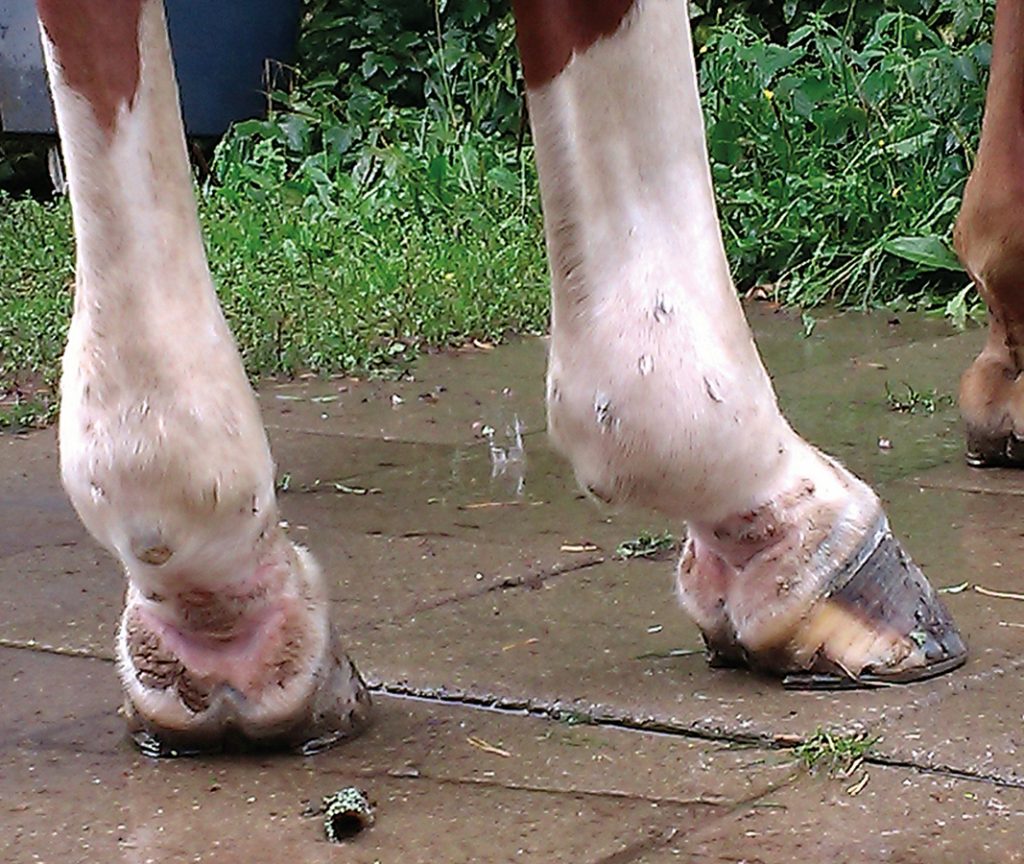
Basic Care for Treating Mud Fever and Skin Infections
The basic care for mud fever and skin infections is largely similar and includes the following steps:
- Keeping the skin clean and washing with an antiseptic shampoo:
- It is crucial to dry the skin thoroughly after washing. Avoid washing if stable conditions do not allow the skin to dry properly.
- Antiseptic Derma1 Skin Care Shampoo softens scabs, gently cleanses the area, and soothes inflamed skin.
- Treating the skin with an antimicrobial product, preferably one that also supports skin regeneration:
- No single product is effective against all potential pathogens that cause mud fever. If there is no response to treatment after a week of proper care, consider switching to a different product and consulting a veterinarian.
- Antimicrobial Derma5 Germ Fighting Wound Cream is ideal for treating scabby mud fever. The cream absorbs well, does not leave a dirt-attracting residue, allows the skin to breathe, and contains fatty acids that support the healing of damaged skin.
- For moist or even purulent mud fever, often found in skin folds or on “feathered” legs, Derma13 Zinc Solution is suitable. This cream helps dry out the infection and supports the healing of damaged skin. It is light and absorbs well.
- Daily treatment:
- Apply treatment daily, preferably twice a day, and continue until the skin is fully healed.
To achieve the best results, consult your veterinarian to fully understand the condition and determine the most appropriate treatment for your horse.
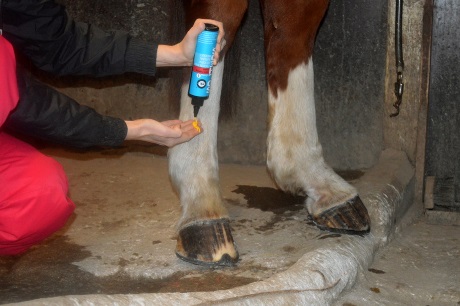
Preventing Mud Fever
The most important prevention measure is to avoid and, where possible, eliminate the primary causes of the condition. The skin should be kept clean and dry. For mud fever prevention, particularly on the legs, the skin can be protected by applying an anhydrous cream that does not block the skin’s ability to breathe. Apply the cream to clean skin before turning the horse out. It is essential to remove the cream afterward and regularly check the skin’s condition. Avoid using thick, clogging ointments that attract dirt.
Derma10 Heel Balm and SOLHEDS Leather Balm are excellent options for protecting the skin from moisture and external factors that predispose horses to mud fever.
After visiting public places, wash the legs with an antiseptic shampoo, such as Derma1 Skin Care Shampoo. Protective creams can also be applied to clean skin under leg wraps. Make sure the wraps are kept clean and disinfect them if necessary. Always use dry wraps on the horse’s legs. For example, Gatusos leg wraps are easy to keep clean and dry, making them a good choice.
Rug rubs and grazes of the harness
Many active horses are clipped for the winter, which increases rug use. Clipped hair tends to stand upright, creating friction against the rug, which prevents it from sliding smoothly. This often results in rubbing marks, especially around the shoulders. Another common area for rubbing is on the withers and at the base of the mane.
Improving the coat’s glide can help reduce rubbing. Derma9 Luxury Shine & Care Spray is a safe way to enhance coat glide. Its ingredients support and nourish both the hair and skin while giving the coat a beautiful shine and decreases the static electricity. Avoid silicone-based products, as they can build up on the hair and mane, causing them to break under their own weight. Silicone forms an impermeable, plastic-like film that can block the skin’s ability to breathe, increasing the risk of skin issues.
For treating skin rubbing marks, Derma2 Calming Serum is an excellent choice as it absorbs well and promotes skin and hair regeneration. Massage the serum into clean skin; usually, brushing the area is sufficient preparation before application.
If the skin is broken, there is a risk of infection. To minimize this risk, wash the area with antiseptic Derma1 Skin Care Shampoo. If washing is not possible or you cannot dry the skin thoroughly, use Derma5 Germ Fighting Wound Cream instead.

Wounds and Stud Injuries
In winter, snowy ground often found in northern regions can help with minor stud injuries, as the cold naturally reduces bleeding quickly. The basic care for smaller surface wounds and scratches involves keeping the wound clean, providing moisture, and using an antimicrobial wound product such as Derma5 Germ Fighting Wound Cream or Derma6 Wound Spray. Avoid wound care products containing ethanol or alcohol, as they sting when applied to wounds and dry out the wound and surrounding skin, delaying healing.
Bite wounds, puncture wounds, and large wounds are prone to infection and always require veterinary attention.
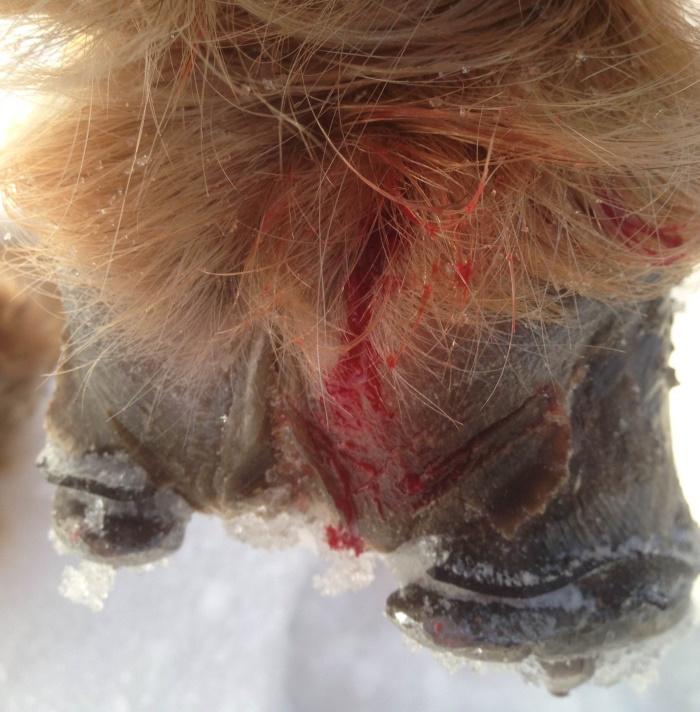
Thrush
In thrush the frog deteriorates and eventually gets infected. Thrush is common especially in wet weather, like in autumn. A dirty stall, field, surface and ground conditions, like urine and manure, enhance the onset of thrush. Infection can be noted as softening of the frog, scraping of the frog and eventually black smelly secretions. If untreated, the infection can spread deeper to hoof tissue and become a chronic infection and even spread to tissues outside hoof.
The common cause of thrush is a bacterium living in nonoxygen (anaerobic) conditions. Regular cleaning of the hooves, letting hooves dry and good hygiene conditions are essential for the treatment and preventing thrush.
Thrush is treated in collaboration with farrier and when needed with veterinary. Farrier carves off the deteriorated and infected frog tissue and creates “ventilation” in order to get the secretion out. Local treatment of thrush includes bacteria killing (antimicrobic) treatment e.g., copper sulphate. The target is to keep the hooves clean and dry. Farrier is needed regularly to manage the frog during the treatment.
It is challenging to treat frog in the bottom of the hoof. It is not always possible to correct the harmful environment, which maintains the thrush. There is a risk that thrush develops into chronic infection and spreads deeper into the hoof. If the horse is only treated in the stable conditions, thrush that has invaded deeper into the hoof tissue is very challenging to treat. At worst, the situation may require treatment in clinic conditions. It is essential to treat thrush early. Treatment of thrush can easily take several weeks.
If the treatment is unsuccessful and the symptoms worsen, e.g., the thrush worsens, horse becomes lame and leg swells, calling a veterinary on site is necessary.
Many of the preparations used in the treatment of thrush are toxic, which damage and/or dry out and shrivel the frog tissue. These preparations can ease and get the thrush infection into control, but they might also partly or severely damage the frog tissue. Derma14 Thrush thrasher help to purify and keep the hoof clean. Derma14 oil also supports the renewal of frog and it does not dry and damage frog tissue. Derma14 solution is an excellent support for the management of damaged frog tissue.
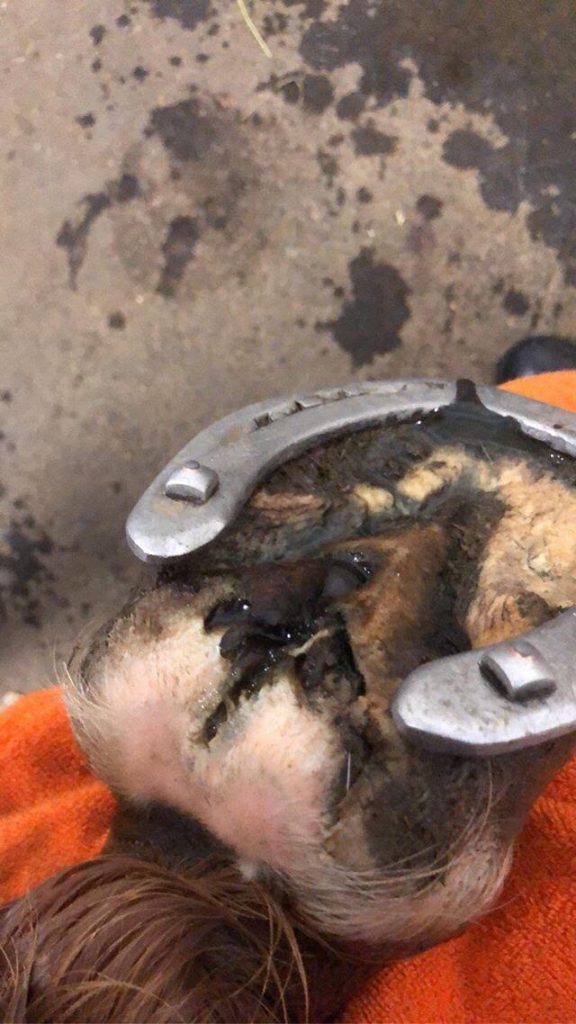
Treatment for hoof abscess
A hoof abscess can either be punctured mechanically by a farrier or a veterinarian, or the treatment is based on making the sole of the hoof softer, so that the hoof abscess can burst more easily. With Derma1 skin care shampoo, you can make a hoof abscess dressing. A cotton ball/gauze soaked in Derma1 skin care shampoo is applied to the suspected hoof abscess site. An adhesive bandage is wrapped around the hoof, a plastic bag is placed on top and taped. After breaking out, the bottom of the hoof often has to be hardened with iodine.
Treatment of hoof abscess requires cooperation with a veterinarian and a shoemaker.
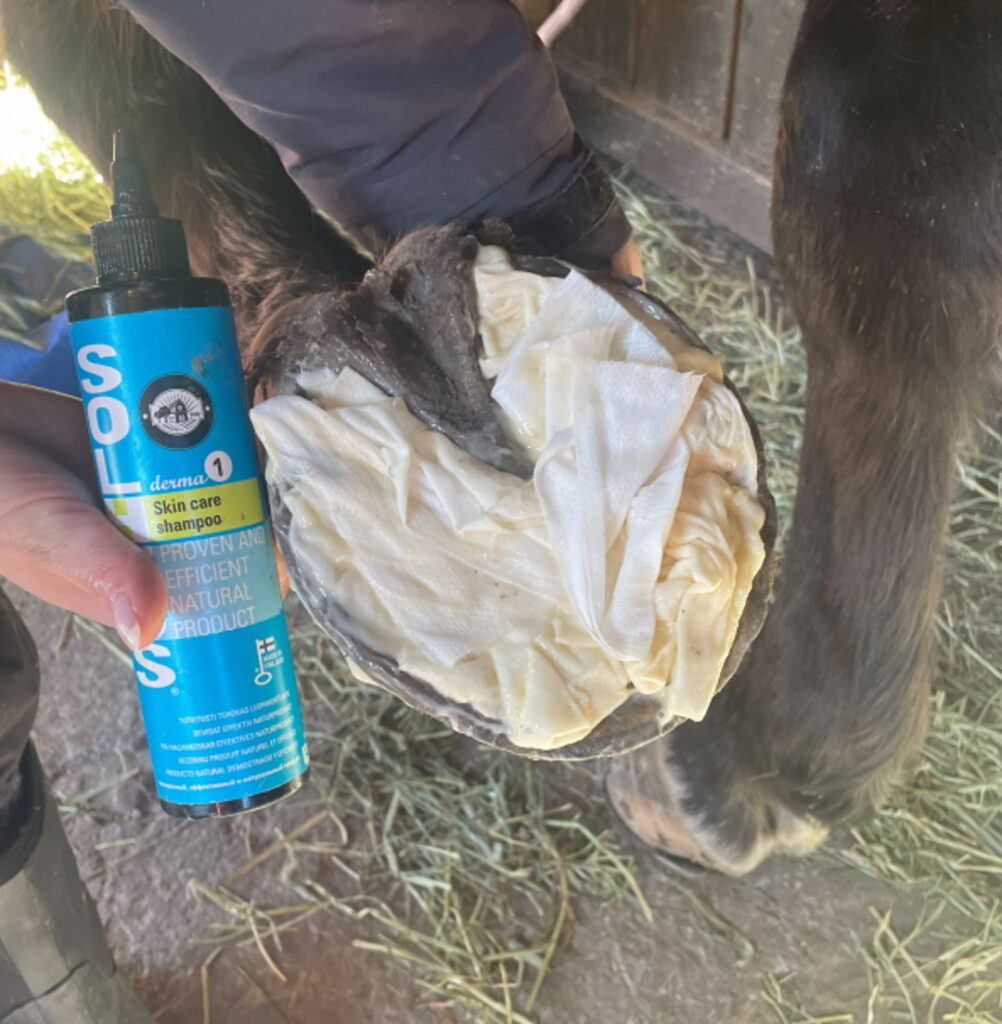
Dry Flaky Skin
As winter progresses, many horses experience dry and flaky skin. Brush away the flakes and keep the skin area clean. Use Derma9 Luxury Shine & Care Spray to provide moisture to the skin. When washing, use neutral cleansers and avoid anionic detergents, such as sulfate-based shampoos. Harsh anionic cleansers wash too aggressively away the fatty acids that protect the skin and coat. Derma4 Gentle Shampoo does not dry out the skin; instead, it moisturizes while leaving a beautiful shine and reduces dandruff. Derma4 Gentle Shampoo is concentrated and should be diluted according to the level of dirt on the horse.
Horses prone to summer eczema often develop scabby, crusty areas of skin after the season. It may take some time for the skin to normalize after an allergic reaction. Dry, scabby skin should be softened to prevent damage during cleaning. Derma1 Skin Care Shampoo is ideal for softening scabs and removing them gently without harming the skin.
If washing is not an option or if the skin cannot be dried properly, brush the skin area clean and provide moisture. Derma2 Calming Serum is well-suited for this purpose. Alternatively, provide moisture using Derma9 Luxury Shine & Care Spray.
Diarrhea bottoms
A sensitive stomach, often manifesting as diarrhea, is a troublesome and unpleasant issue for many horses. The primary goal should be to identify the cause of the diarrhea and address it. Dried diarrhea on the skin can cause chafing, which easily leads to infections. Additionally, it can be painful for the horse to move when dry feces irritates the area between the buttocks.
Use Derma4 Gentle Shampoo to gently clean the skin. If the skin is warm and already chafed, wash the area with antiseptic Derma1 Skin Care Shampoo. For chafing, treat the area with Derma2 Calming Serum. If the skin is already broken, apply the antimicrobial Derma5 Germ Fighting Wound Cream.
You can prevent and protect the skin from chafing caused by diarrhea by spraying the clean area with Derma9 Luxury Shine & Care Spray. If the diarrhea is severe, it is better to protect the skin with Derma10 Heel Balm.
Animal Care Products
When choosing care products, especially for sensitive skin and treating damaged skin, caution must be exercised. Safe and effective animal care products are not a given on the market.
According to regulations, animal care products are technical preparations; legally, animals are objects. The product safety required by authorities for animal products is the same as, for example, house paint or car products. Products may contain ingredients that are harmful to animals and completely unsuitable for animal care products. The manufacturer determines their own quality and product safety level, not the authorities. Animals are not protected by law as humans are through cosmetics legislation (shampoos, skin care products, etc.).
Avoid products without ingredient lists and those containing chemical hazard warnings (corrosive, flammable, etc.). Choose products where you can verify the manufacturer’s competence in the field, not just mentioned anonymous experts and influencers’ praise. A well-known brand or natural product is not a guarantee of product safety.
Read more on product safety here.

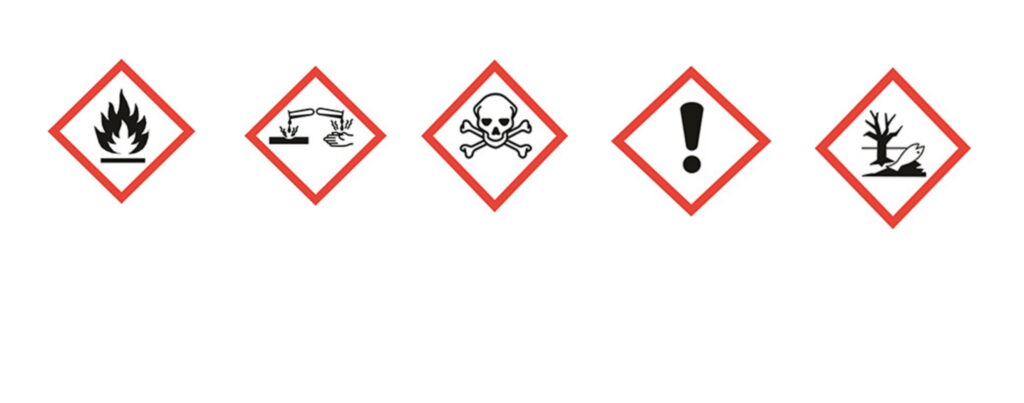
Author: Biochemist Saija Pihkanen
Graduated with a Master of Science from the University of Helsinki
Work experience: Researcher at the Veterinary School, Acting Senior Lecturer in Biochemistry.
Over 20 years of international leadership positions in the pharmaceutical and biotech industries. Professional in drug development.
Developer of the SOLHEDS product line.
Clinical study of summer eczema in horses, Veterinary Days 2015, Helsinki.
Guidelines for caretakers of horses with mud fever based
Video instructions
The SOLHEDS product line was originally developed for the treatment of the author’s own horse’s summer eczema and dog’s hotspots, as well as the author’s own skin problems.
Studied summer eczema in horses for over 20 years and treated over 200 horses with summer eczema and numerous mud fever horses.
Suomenratsut ry awarded Saija the Horse Welfare Award in 2018.


